Reflecting action, shaping self–echoes of the vita activa
Teresa Grandits & Rastislav Podhorsky
May 7 - June 14 2024
The exhibition "Reflecting Action, Shaping Self," integral to the broader "Beyond Existence" series, delves into the philosophical discourse initiated by Hannah Arendt in her seminal work, "The Human Condition."
Featuring works of Teresa Grandits and Rastislav Podhorsky, this showcase serves as a visual and conceptual interrogation of Arendt’s distinctions between 'vita activa' (active life) and 'vita contemplativa' (contemplative life). Through this lens, the exhibition explores the dynamic interplay between self-reflection and political action, which Arendt positions as foundational to understanding and shaping the human condition. The show aims to underscore the belief that art is not just a reflection of life but an active participant in shaping the philosophical and political landscapes of our times.



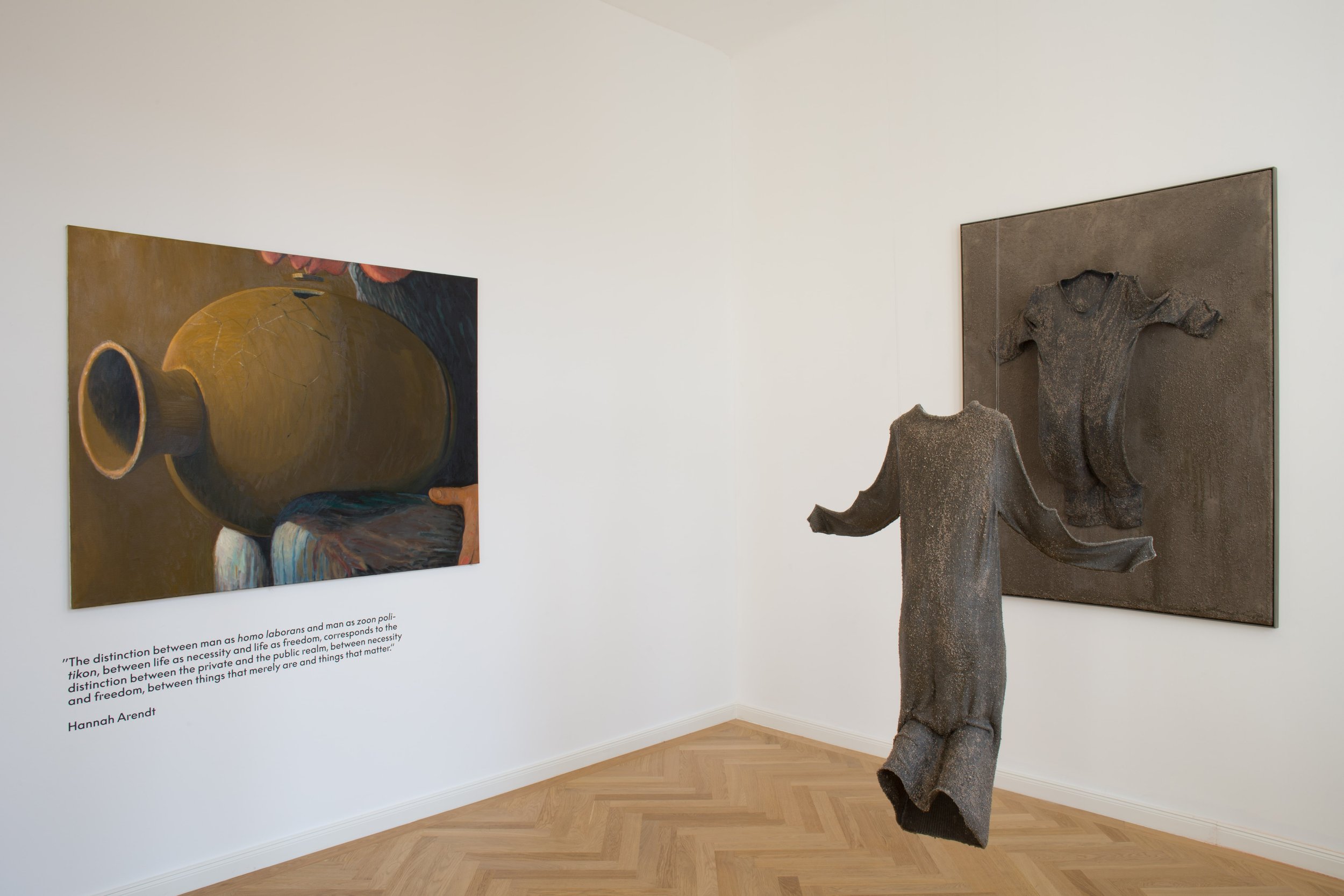
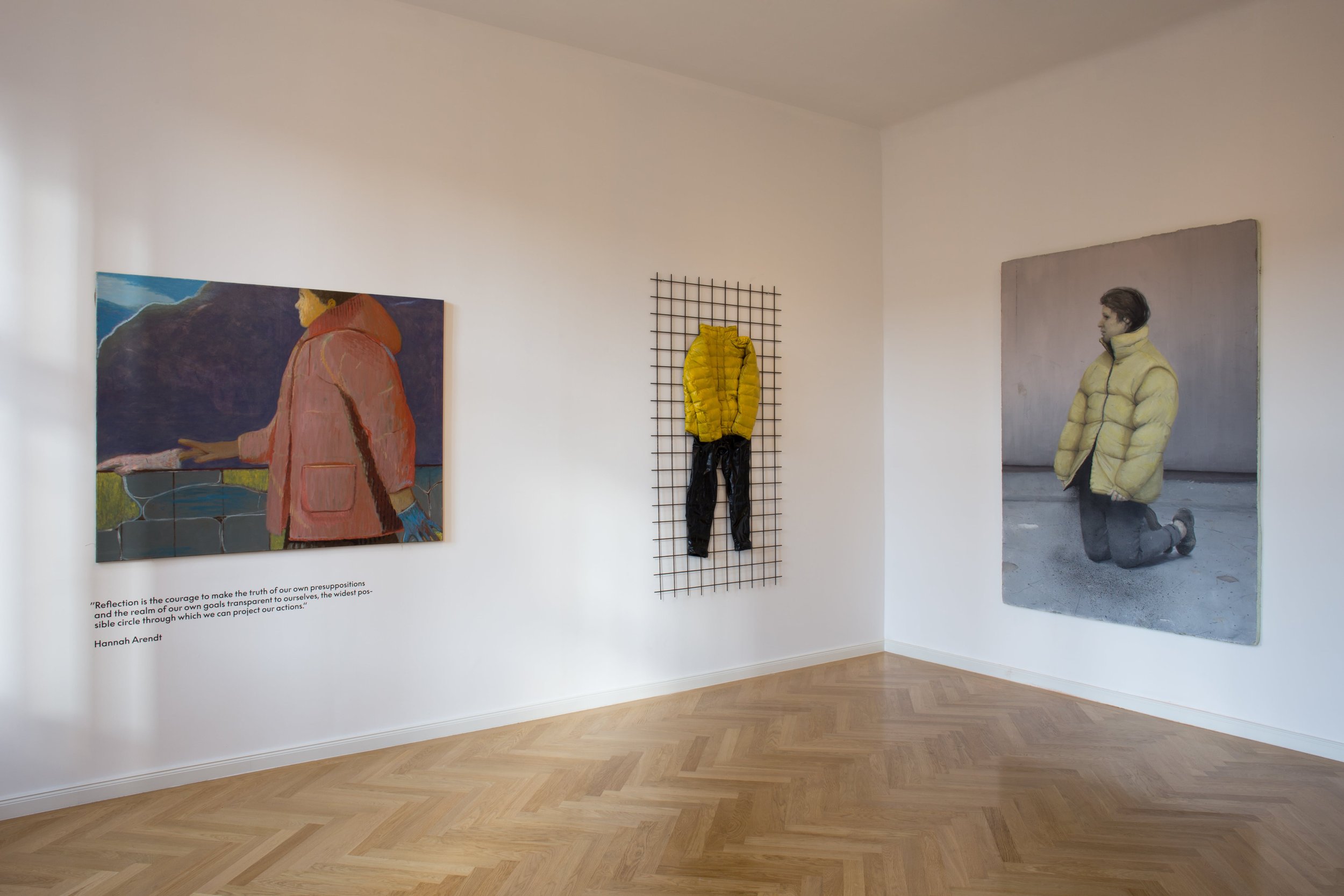

Arendt’s "The Human Condition," first published in 1958, methodically categorizes human activities into three fundamental types: labor, work, and action. This tripartite scheme is pivotal in Arendt’s philosophy, as it differentiates between aspects of human life that sustain biological necessities, create lasting artifacts, and engage in the uniquely human capabilities of speech and action. Arendt emphasizes the public sphere as the realm of action where individuals assert their agency and collectively shape their world. "Reflecting Action, Shaping Self" draws directly from these philosophical underpinnings, urging viewers to critically examine the role of introspection in both their public engagements and private contemplations.
In the exhibition, Teresa Grandits' installations such as "Ratio I" and "Nodus III," employ textiles and structured forms to symbolically interrogate the construction and constraints of identity. Grandits' use of garments, starkly arranged against minimalist backdrops of metal industrial grids, not only challenges the viewers' aesthetic expectations but also prompts them to contemplate the sociopolitical structures that sculpt personal and collective identities. These works embody Arendt’s notion of the public realm as the "space of appearance," where individuals reveal their identities through interaction, thus offering a critical reflection on the external forces that mould us.
Complementing Grandits' abstract and architectural forms, Rastislav Podhorsky's art offers a poignant exploration of the internal processes shaping human identity. His introspective artworks, such as the evocative "Pepper after absence," capture solitary moments of reflection. These pieces resonate with Arendt’s concept of 'vita contemplativa,' underscoring the importance of internal contemplation in the formation of self-identity and the contemplative retreat where personal introspection can lead to profound political and social insights.
The dialectic Arendt proposes—between the visible, communal actions in the public sphere and the solitary, reflective thoughts of the private realm—is vividly brought to life in this artistic dialogue. It presents an intricate journey that invites viewers to traverse from Grandits' exploration of the societal impacts on the self to Podhorsky's intimate depictions of personal introspection. This narrative flow encourages a deeper engagement with Arendt’s ideas, illustrating the interdependence of action and reflection in shaping the human condition.
Teresa Grandits
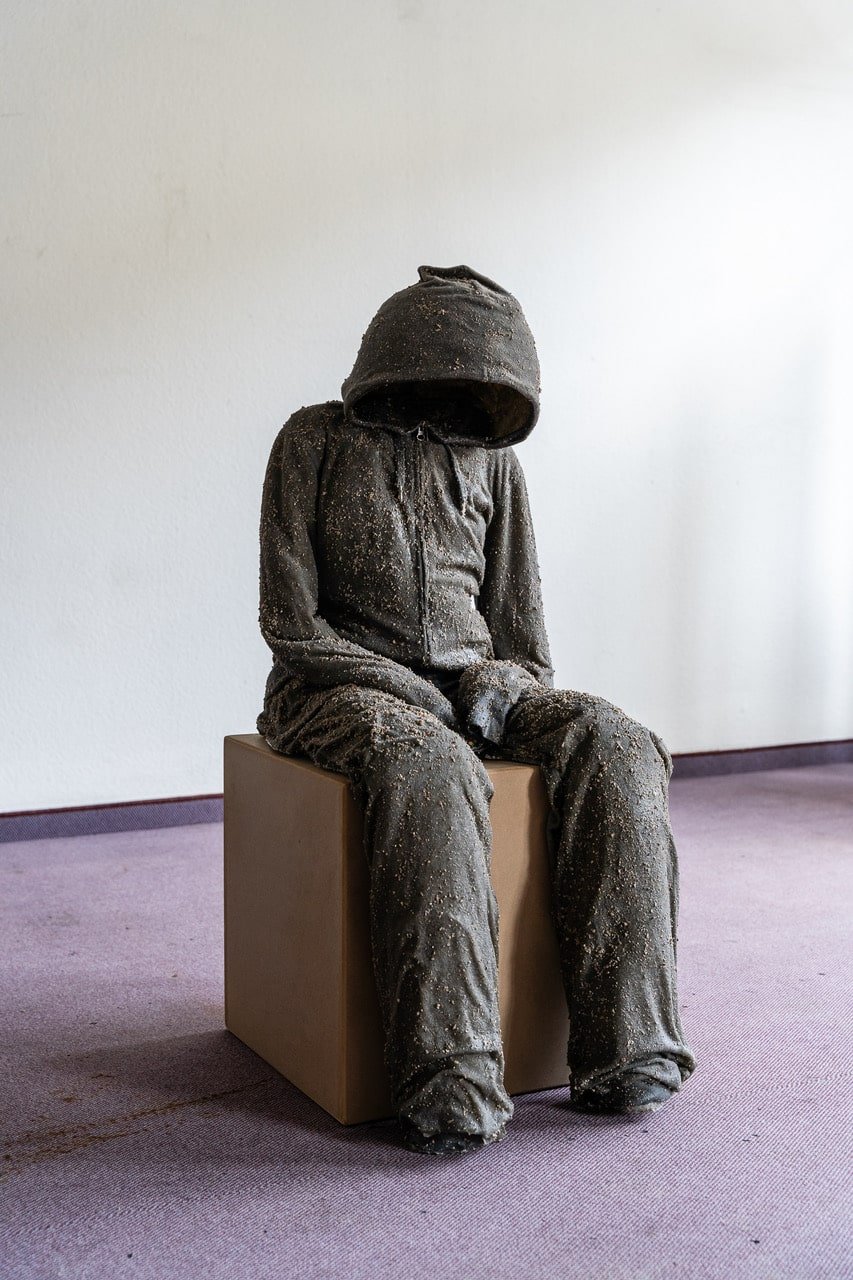
Anima genesis III. Mixed media, textile, 106x47x56 cm, 2023

V. Mixed media, textile on canvas, 95x75x5 cm, 2022
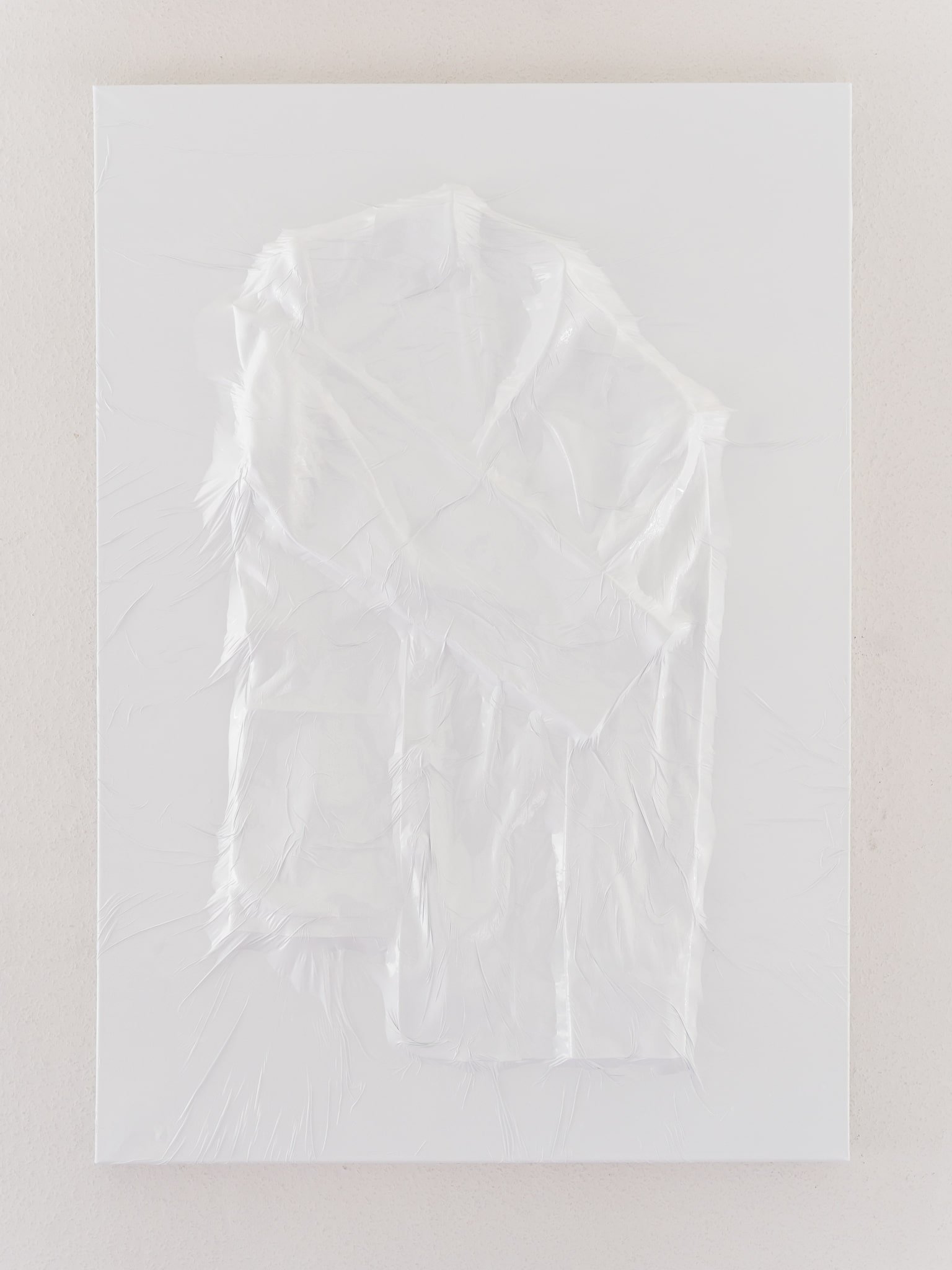
II. Mixed media, textile on canvas, 103x73x5 cm, 2022

III. Mixed media, textile on canvas, 95x75x5 cm, 2022

Ratio I. Mixed media, textile on steel, 190x100x7 cm, 2024

Nodus I. Mixed media, textile on steel, 100x80x5 cm, 2024
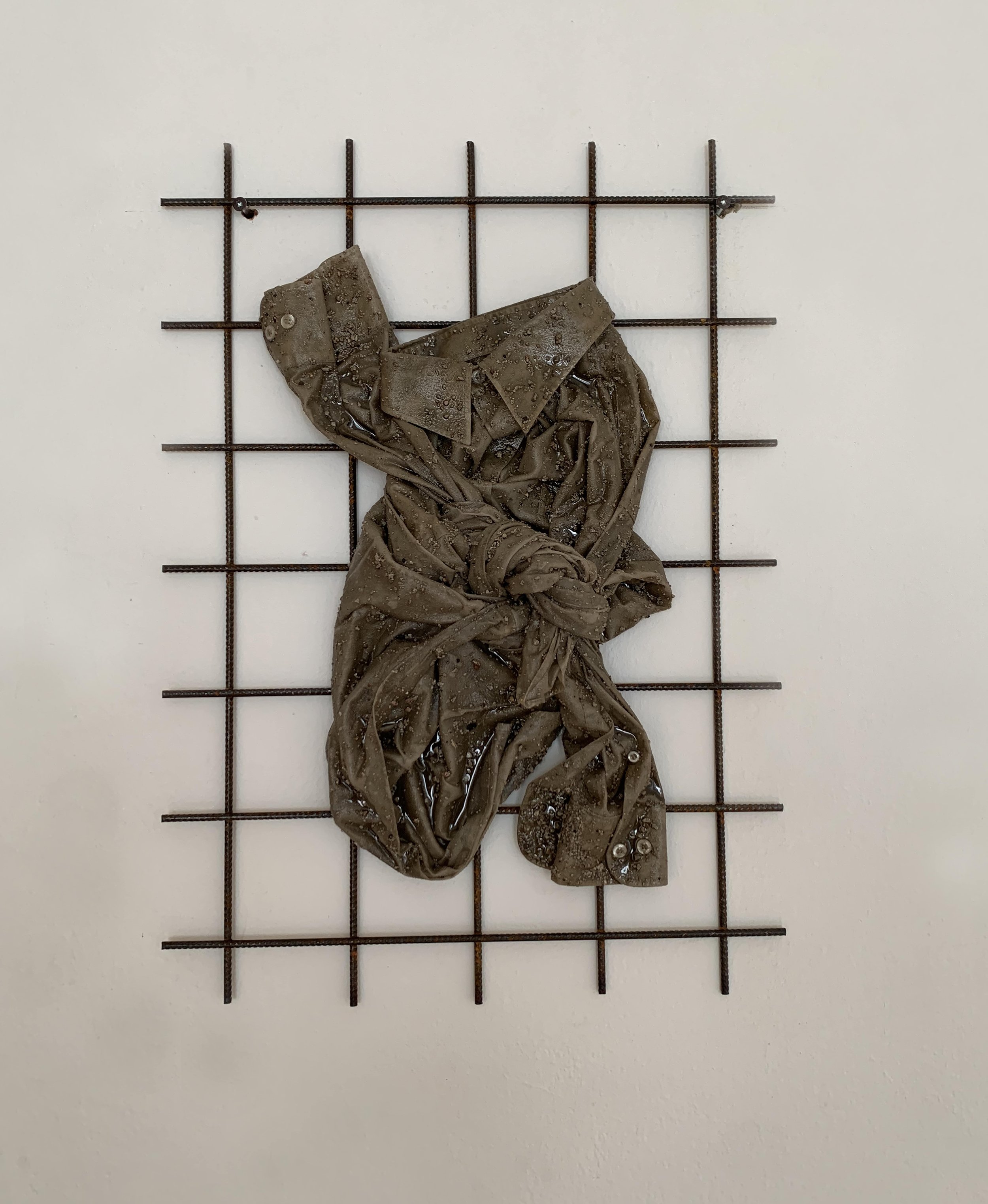
Nodus IV. Mixed media, textile on steel, 70x50x5 cm, 2024
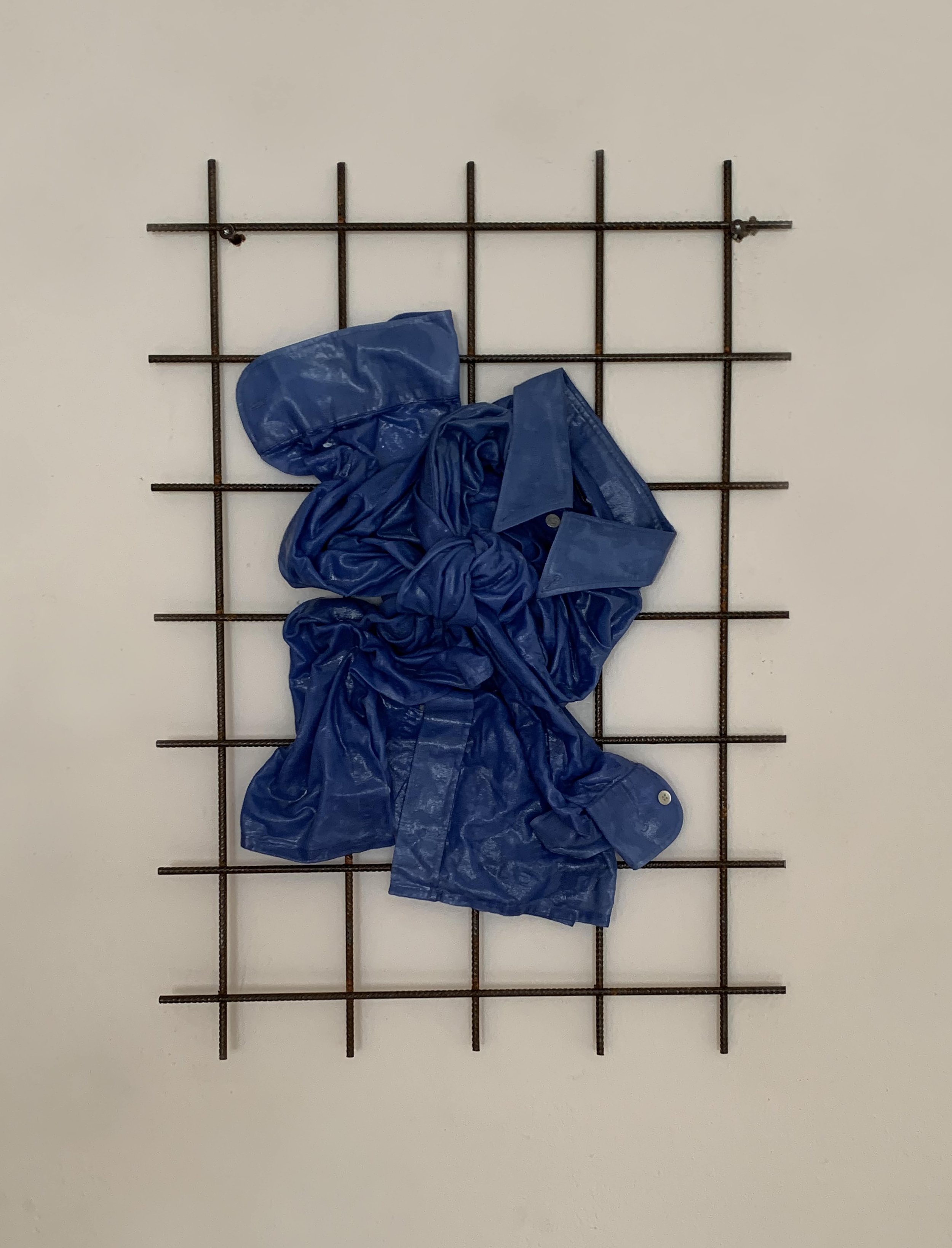
Nodus III. Mixed media, textile on steel, 70x50x5 cm, 2024
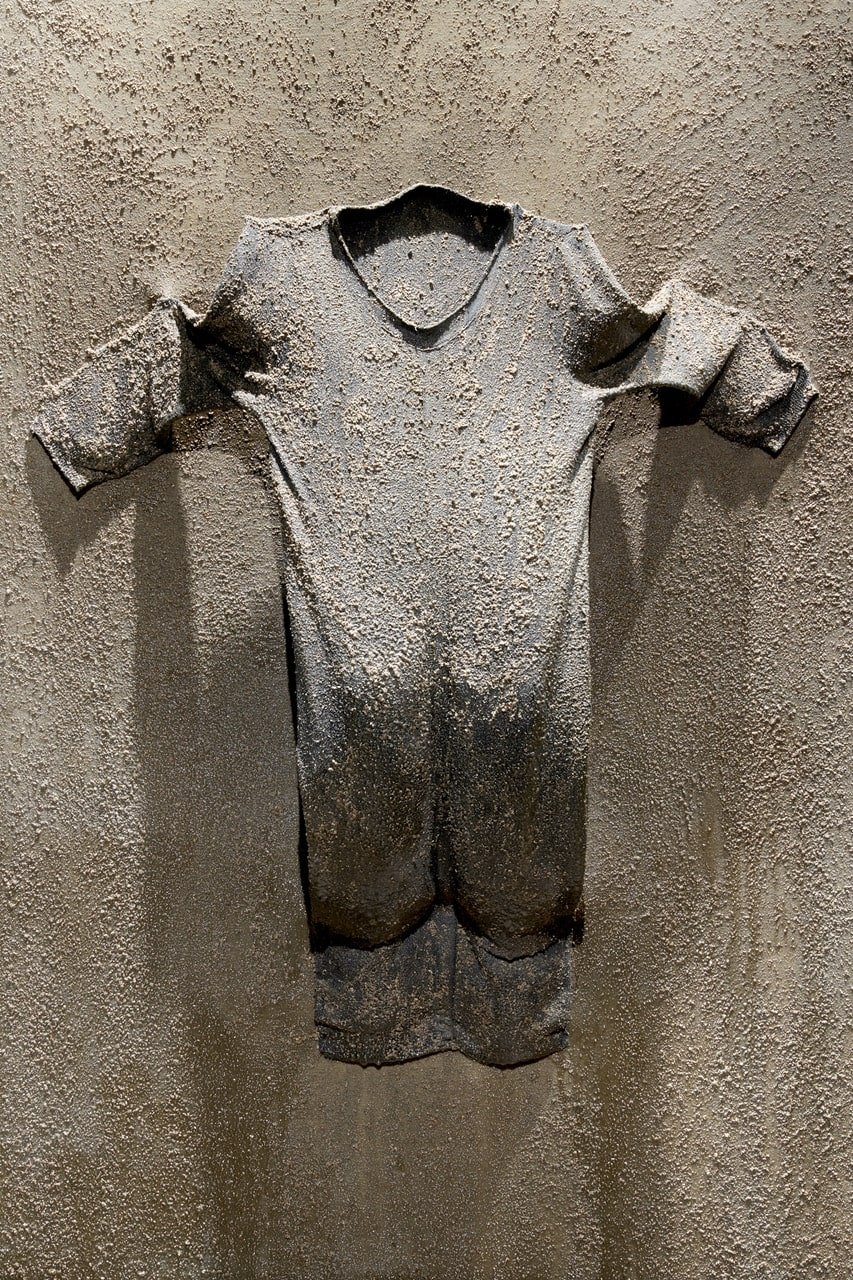
Anima XIV. Mixed media, textile on canvas, 163x122x5 cm, 2023

Ich habe Nein gesagt I. Mixed media, textile, 217x70x50 cm, 2024
Rastislav Podhorsky
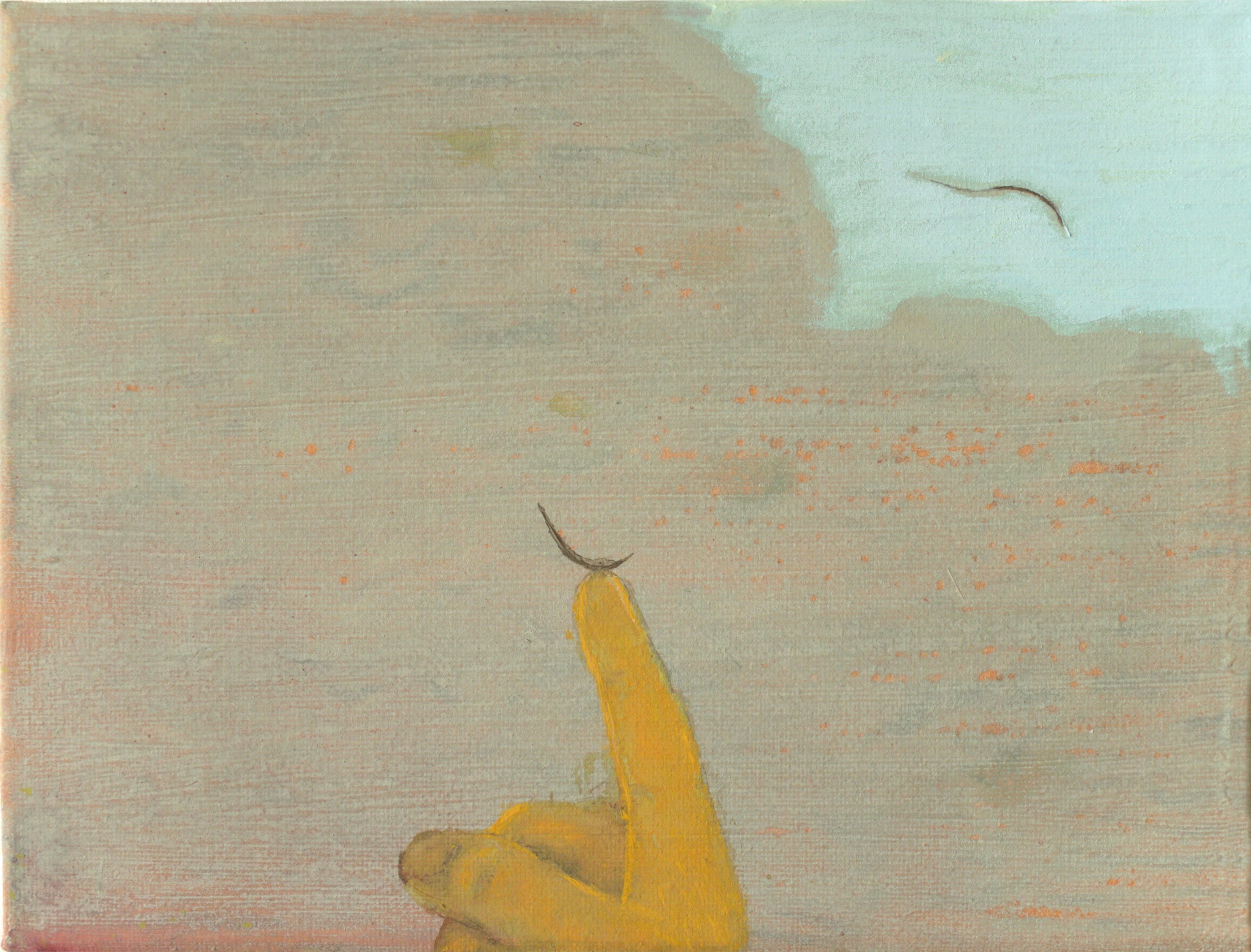
Ascending. Oil and tempera on canvas, 23x18 cm, 2024

Barrier. Oil on canvas, 150x120 cm, 2024

Inscrutable pepper. Oil, pepper and rubber on styrodur, 210x180 cm, 2016
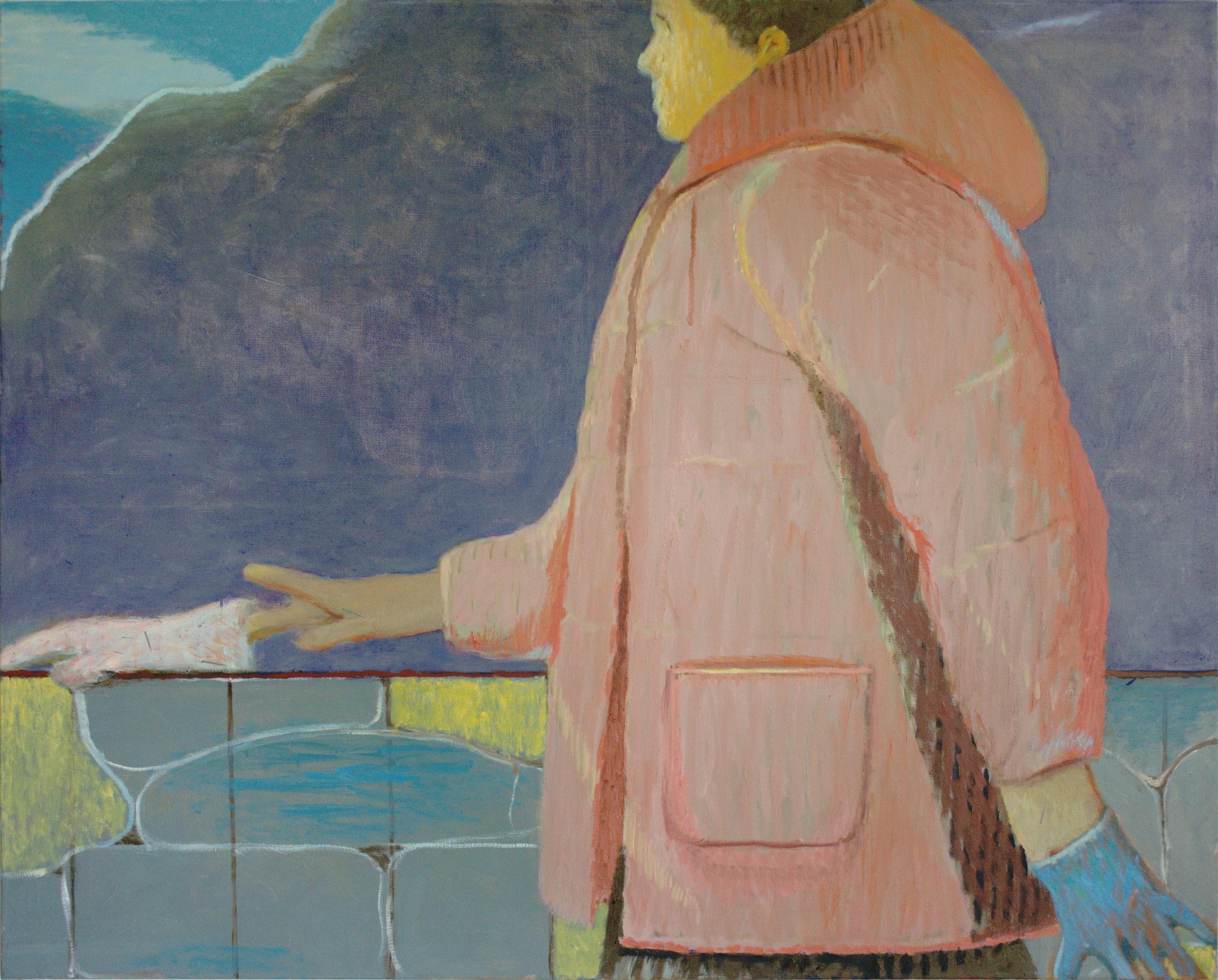
Interval. Oil on canvas, 120x150 cm, 2024

Jacket. Pencil and color pencil on paper, 29,7x21 cm, 2016

Lace. Pencil on paper, 29,7x21 cm, 2016-2022

Mens pepper. Oil, rubber, pepper on styrodur, 210x180 cm, 2014

Pepper after absence. Pencil and color pencil on paper, 29,7x21 cm, 2016

Shaving. Oil on canvas, 50x60 cm, 2024

The Dryer. Pencil and acrylic on paper, 29,7x21 cm, 2012

The Head. Oil on canvas, 90x80 cm, 2024
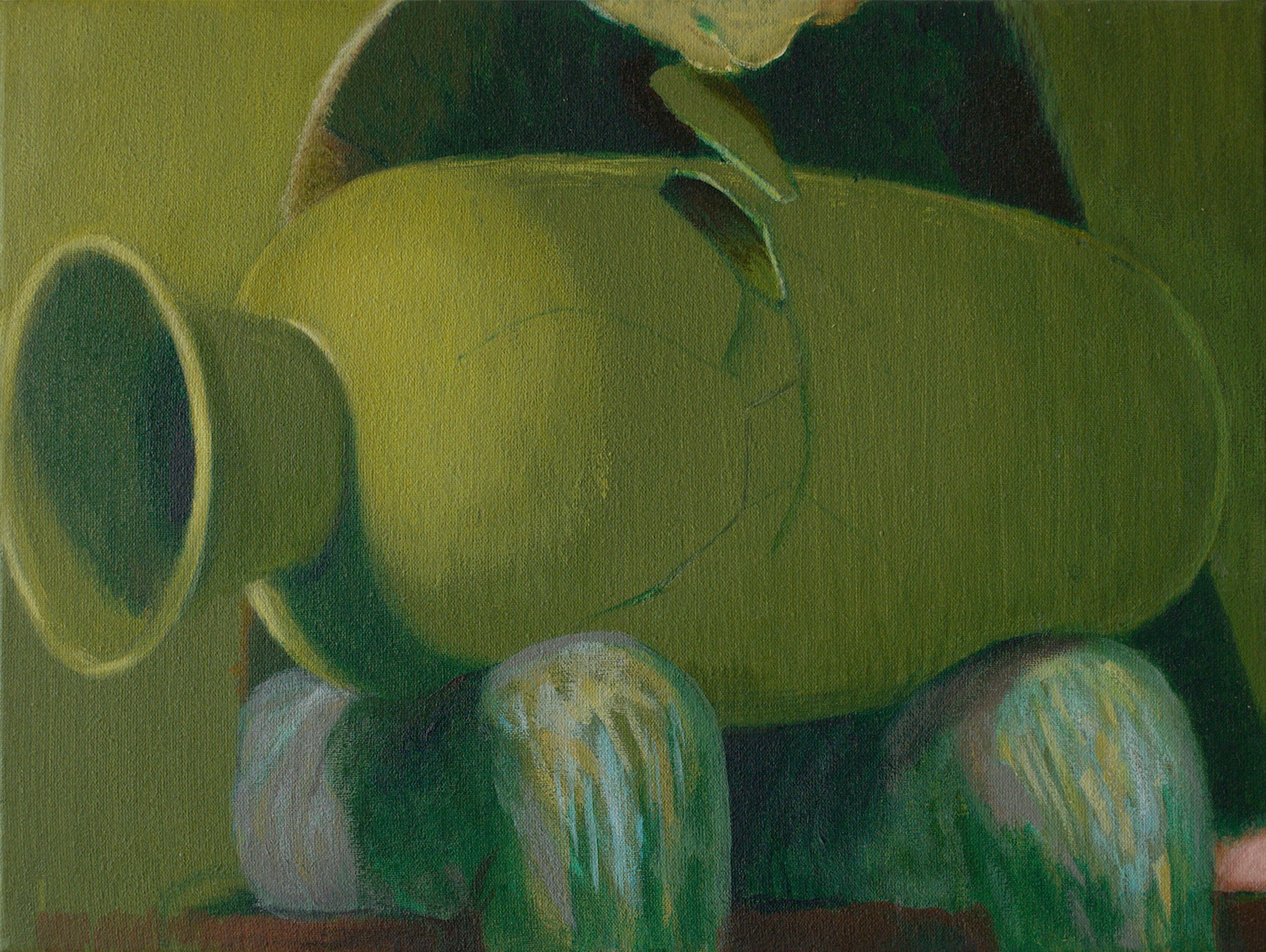
The Vessel II. Acrylic on canvas, 30x40 cm, 2023

The Vessel IV. Oil on canvas, 120x150 cm, 2024

The Vessel. Pencil on paper, 20x17 cm, 2019
Imprint
Rastislav Podhorsky
rastislavpodhorsky.com
Teresa Grandits
grandits.org
Curated by Anne Avramut
All rights reserved.
